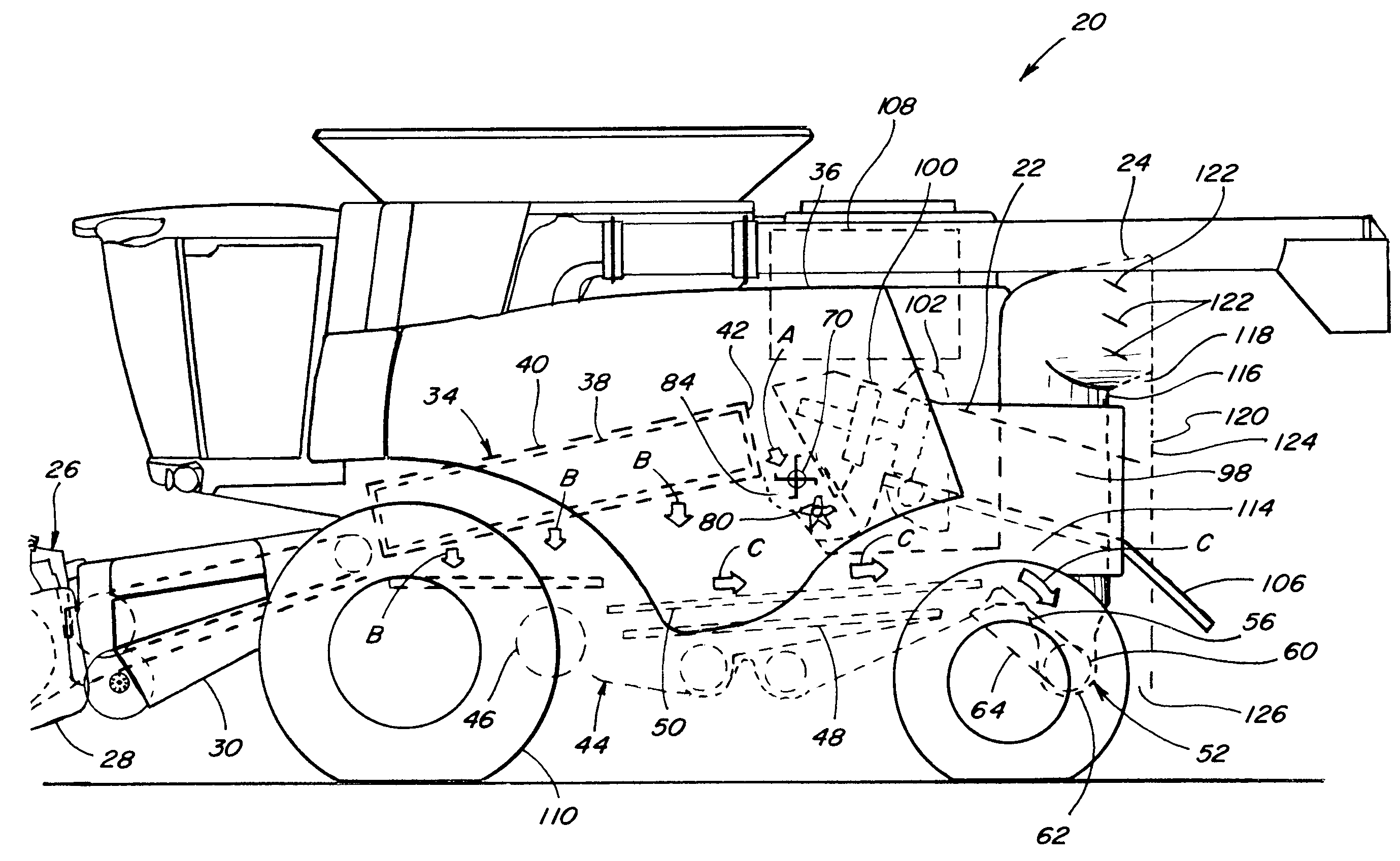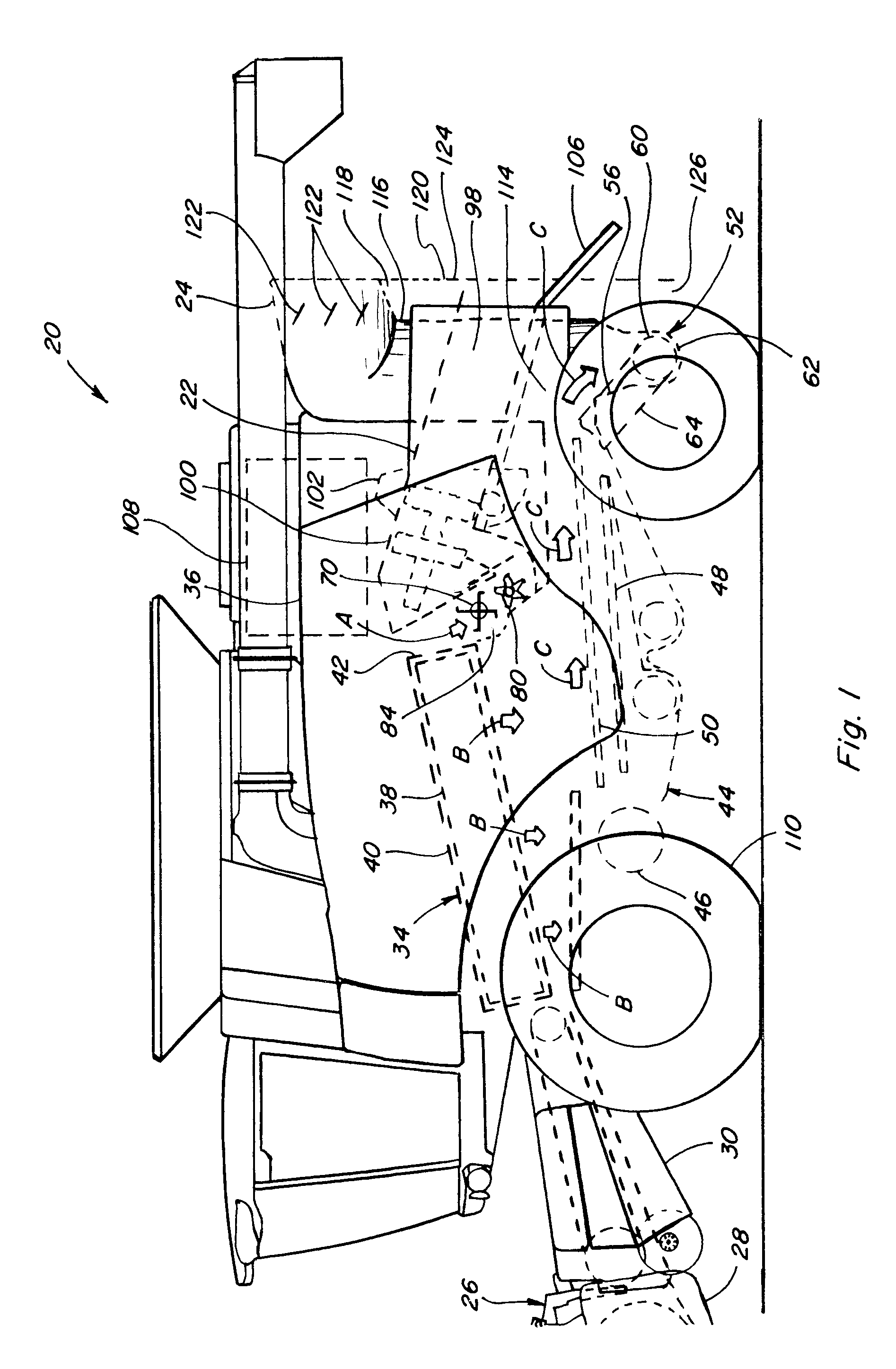Agricultural combine with on-board baler and dust suppression capability
a technology of agricultural combine and baler, which is applied in the field of agricultural combine, can solve the problems of inability to incorporate chaff into bales, add complexity, cost and weight, and reduce the efficiency of chaff collection, so as to facilitate the passage of chaff, reduce the cost and weight, and achieve good mixing
- Summary
- Abstract
- Description
- Claims
- Application Information
AI Technical Summary
Benefits of technology
Problems solved by technology
Method used
Image
Examples
Embodiment Construction
[0032]Referring now to the drawings, wherein preferred embodiments of the present invention are shown, in FIGS. 1, 2, 3, 4, 5, and 6, a self-propelled agricultural combine 20 is shown, including an on-board baler 22 operable for compacting crop residue and chaff into large square bales and discharging the bales, and dust suppression apparatus 24, constructed according to the present invention.
[0033]Combine 22 includes harvesting apparatus 26 having a crop appropriate, e.g., corn or grain, header 28 constructed and operable in the well known manner for cutting crops from a field and gathering the cut crops; and a feeder 30 also constructed and operable in the well known manner for receiving the cut crops, initially compressing them into a continuous mat 32 (FIG. 6), and conveying them to a threshing system 34 contained within a housing 36 of combine 20. Threshing system 34, also constructed and operable in the well known manner, includes apparatus configured and operable for separati...
PUM
 Login to View More
Login to View More Abstract
Description
Claims
Application Information
 Login to View More
Login to View More - R&D
- Intellectual Property
- Life Sciences
- Materials
- Tech Scout
- Unparalleled Data Quality
- Higher Quality Content
- 60% Fewer Hallucinations
Browse by: Latest US Patents, China's latest patents, Technical Efficacy Thesaurus, Application Domain, Technology Topic, Popular Technical Reports.
© 2025 PatSnap. All rights reserved.Legal|Privacy policy|Modern Slavery Act Transparency Statement|Sitemap|About US| Contact US: help@patsnap.com



